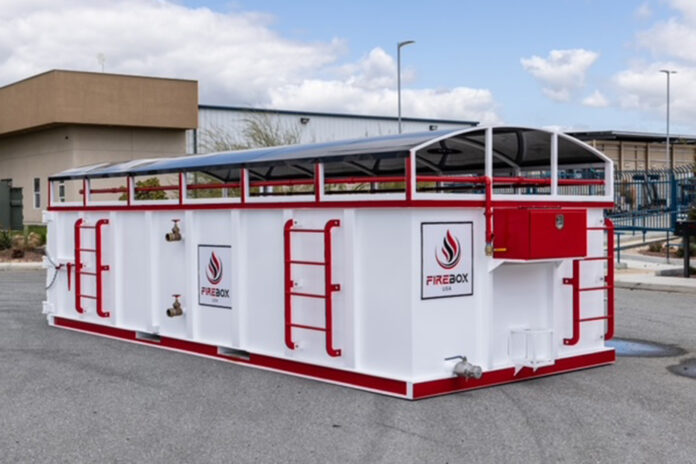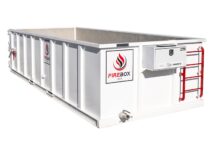Electric vehicles (EVs) are great for curbing emissions, improving air quality and reducing our dependence on fossil fuels. The environmental benefits are hard to ignore, that is until an EV is involved in an accident and the underlying battery system is compromised, putting the motoring public and entire neighborhoods at risk.
EVs damaged in accidents are particularly vulnerable to fires. As soon as the batteries are impacted, a chemical process known as thermal runaway can begin. This harmful by-product, inherent to lithium-ion batteries in EVs, involves the storage cells spiraling into an unmanageable, self-heating condition.
The resulting escalation in temperatures can lead to EV fires blazing at intense temperatures, reaching between 4,000 to 5,000 degrees Fahrenheit. By comparison, a typical gasoline-powered vehicle burns at around 1,500 degrees Fahrenheit. Uncontrolled, this threat poses an urgent health risk to emergency responders at the scene and nearby residents.
According to industry experts, firefighters and hazmat personnel do not have direct access to the batteries underneath an EV. Those cells can be damaged from the impact of the crash or punctured from debris on the road. Either way, thermal runaway generates toxic fumes, and the hydrofluoric acid in the smoke and liquid quickly becomes an eye, lung and skin irritant.
Thermal runaway can begin as soon as temperatures reach the range of 302 and 428 degrees Farenheit. Early warning signs can include increasing temperatures in the vicinity of the EV and a sweet odor in the air. Off-gassing occurs right before thermal runaway begins and can often be detected by smoke alarms and Li-On Tamers.
Other visual clues that thermal runaway may be initiated include sparks, flames, leaking fluid, gurgling sounds and vapors emanating from the batteries. Firefighters, hazmat teams and other responding personnel, including tow truck operators, need to protect themselves with self-contained breath apparatus.
The best method to control the thermal runway is to cool batteries down with water, whether at the scene of the accident or in storage following the collision. Fires can erupt immediately upon impact or unfold long after the battery system sustains damage. Well documented, thermal runaway can manifest hours, days or even months following the initial car collision.
Zip’s AW Direct, a leading supplier of vehicles and accessories to the towing and recovery industry, has examined this phenomenon extensively and recently partnered with the Firebox as the ultimate response to EV fire risks. This patented containment system provides unparalleled mitigation in storage or impound lots.
“Vigilance regarding the potential fire hazard is paramount when storing compromised EVs, not only to curb additional property damage but also to safeguard the environment and public from potential harm,” explained David Rottinghaus, executive vice president at Zip’s and a staunch proponent of safety measures in the burgeoning EV market.
“Currently, tow storage lots, auto auction companies, repair shops and collision centers lack the necessary infrastructure for safely storing these vehicles,” he continued. “Traditional methods, such as installing concrete barriers or distancing an EV by 50 feet, are insufficient when managing the risks associated with potential EV fires.
“While these measures might help prevent the spread of fire to nearby vehicles or structures, they fail to address critical issues such as thermal runaway and effectively containing hazardous chemicals that may be released into the air or seep into the ground,” Rottinghaus added.
Unlike porous, temporary concrete structures, the Firebox is a watertight metal box that can be filled with 18” of water–roughly 1,500 to 2,000 gallons–to safely contain an EV fire and prevent thermal runaway. Once the fire risk has been abated, the contaminated water can be extracted by a pump and responsibly discharged at a proper water treatment facility.
The Firebox measures 120” wide by 288” long and is filled with water through an external supply valve. The treated wood floor protects against caustic chemicals, and the top can be secured with a metal mesh enclosure and locked to preserve evidence. A separate sprinkler system can also be installed to help regulate heat from outside sources.
Compared to heavy concrete blocks, the Firebox is also portable. Despite its 14,000-lb. tare weight, the unit can be repositioned in open lots by a yard lift, roll-off truck or industrial carrier. Providing room on all sides of the EV both inside and out, the Firebox can be set next to other vehicles to save room for other incoming-producing storage space opportunities.
Without a self-contained structure, best management practices from professional organizations recommend a barrier of at least 50 feet from damaged EVs that are at risk for fires at storage facilities. The Firebox eliminates that interim perimeter guideline, so it can be placed near other vehicles and three feet from the property line, unlike other fire-prevention measures.
For pricing and to explore your options for the Firebox, contact the sales team at Zip’s at 800-222-6047 or sales@zips.com









